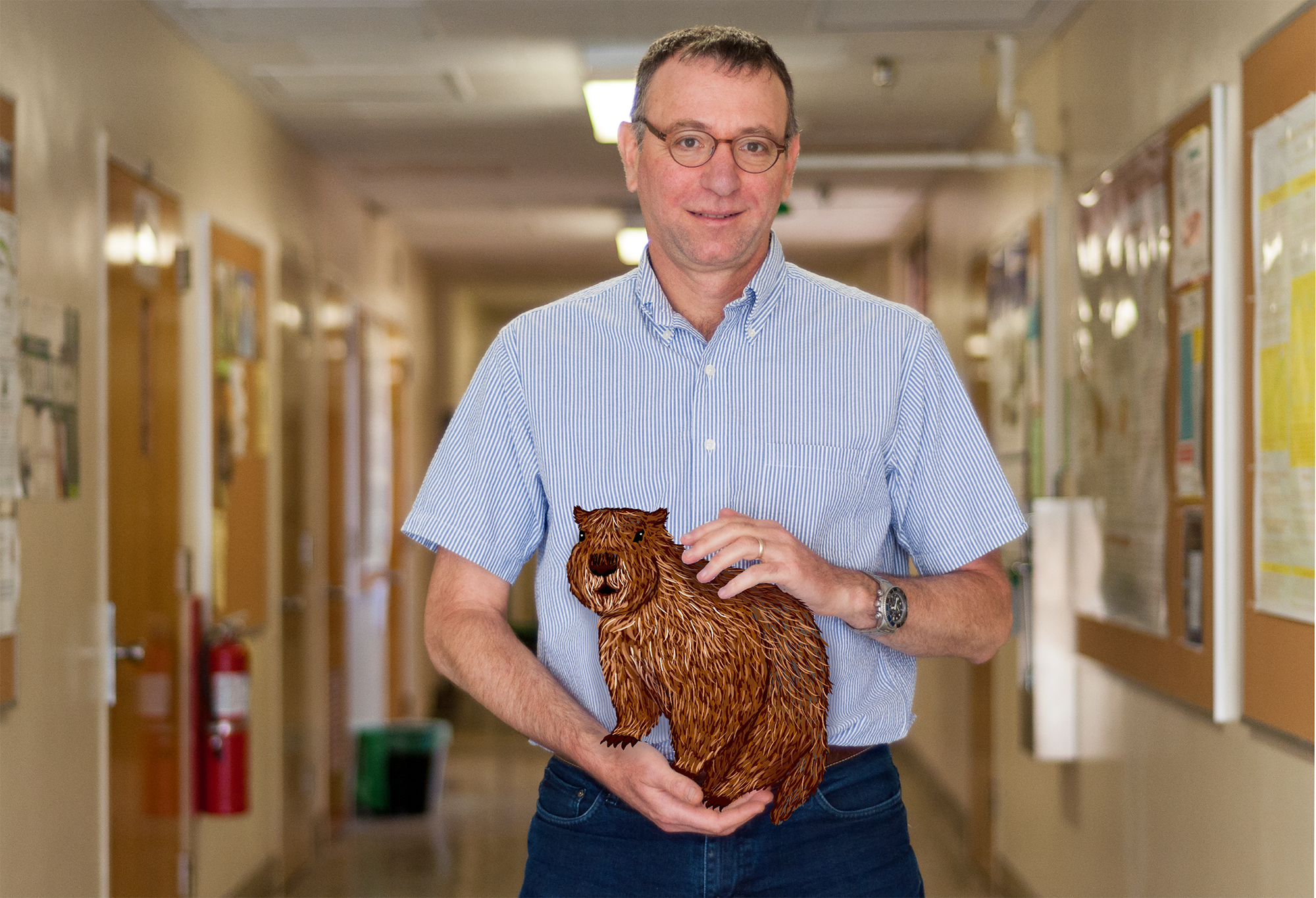UCLA professor heads long-term evolutionary biology project on marmots

Daniel Blumstein, an ecology and evolutionary biology professor and head of the Marmot Project in the Rocky Mountain Biological Laboratory, studies a range of topics through his research on marmots. (Photo by Niveda Tennety/Daily Bruin, Illustration by Evan Charfauros/Daily Bruin)
By Teddy Rosenbluth
April 12, 2018 12:04 a.m.
Daniel Blumstein’s office is filled with marmot souvenirs, ranging from a “marmot-Xing” sign, to marmot T-shirts and memes, to a casino advertisement featuring a marmot.
Blumstein, a UCLA ecology and evolutionary biology professor and head of the Marmot Project of the Rocky Mountain Biological Laboratory, studies a range of topics through his research on marmots, including marmot alarm calls, environmental conservation and the evolution of animal behavior. The marmot is a genus of rodents that includes groundhogs. It lives in burrows with complex social communities.
The Marmot Project, stationed in Colorado, has followed marmots living in the area for 57 years. Every summer, Blumstein and his researchers camp out to track marmots for the five months during which they are not hibernating.
Blumstein said he first became interested in marmots during a work-related trip to Pakistan, where he saw groups of marmots playing in a national park. While he had studied primates and birds before, marmots had unique social characteristics that made them good model organisms for long-term research, he said. He added they have complex, multigenerational social communities and don’t move far away from their burrows, which makes them easy to study.
“If you want to follow animals over time, it is ideal for them to have an address and be active during the day,” he said.
Blumstein said he and his team record the survival of marmots during hibernation, burrow sharing among marmots and basic biological information, such as weight. Dana Williams, an ecology and evolutionary biology doctoral student in Blumstein’s lab, said even when Blumstein is not in Colorado, he frequently checks in with the researchers to see how the marmots are doing.
“Any time you are out in the field with the animal you’re researching, you develop a connection,” Williams said. “(Blumstein) has been in the field with marmots for a very, very long time.”
Blumstein admitted that during his time in Colorado, he picked a favorite marmot, named Dandelion.
“Some of the male (marmots) are complete jerks, but Dandelion is just really sweet,” he said. “He interacts with his kids, he interacts with his wife and really just guards and protects them.”
Williams said Blumstein’s love for marmots was apparent to her even during their first conversation.
“I was watching the marmots alone one morning and suddenly, out of nowhere, (Blumstein) sat next to me and said, ‘Have you seen the new marmots? They’re so cute,’” she said. “That was the first time I ever saw him.”
The information Blumstein collects from the marmots have been used to address a variety of questions in evolutionary biology. For example, Blumstein uses the data from his research on marmots to study their climate change adaptations.
Because of their ability to adapt to many conditions, yellow-bellied marmots are able to survive in a broad range of environments, from desert areas in Reno, Nevada, to the peaks of the Rocky Mountains. Understanding the range of environments marmots can live in is important to understand how they and other animals can adapt to climate change, he added.
“Understanding the limits of plasticity in a changing environment is going to be really important, and we’re learning a lot from marmots,” Blumstein said.
Among the marmot paraphernalia above Blumstein’s desk is an old VCR copy of “Groundhog Day.” On the 15th anniversary of the movie, Blumstein said a group of directors reached out to Blumstein to make a feature on the study of groundhogs.
“They wanted to make a joke about us studying marmots for our whole lives but they had such a great time marmoteering, they ended up just making a really nice nature documentary,” he said.
Blumstein said he intends on studying marmots for a long time and thinks that longitudinal studies, like the Marmot Project, offer valuable information that two- or three-year long studies cannot offer.
“Context is everything,” he said. “When you start having longer-term data bases, you find that being able to get contextual variables is extremely important.”


